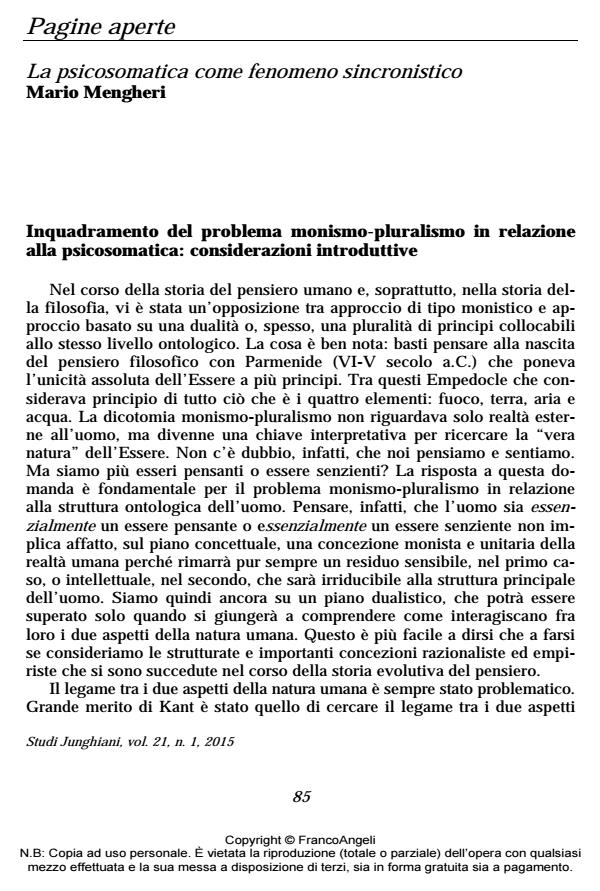Psychosomatics as a synchronistic phenomenon
Journal title STUDI JUNGHIANI
Author/s Mario Mengheri
Publishing Year 2015 Issue 2015/41
Language Italian Pages 20 P. 85-104 File size 111 KB
DOI 10.3280/JUN2015-041008
DOI is like a bar code for intellectual property: to have more infomation
click here
Below, you can see the article first page
If you want to buy this article in PDF format, you can do it, following the instructions to buy download credits

FrancoAngeli is member of Publishers International Linking Association, Inc (PILA), a not-for-profit association which run the CrossRef service enabling links to and from online scholarly content.
The author, after a brief history of the psychosomatic evolution referred to the interpretative categories of monism-dualism, shows how analytical psychology represents an effective bridge to cross and review the numerous expressions of psychosomatic paradigm including that one of its own overcoming. Through some cardinal principles of Jungian theory, such as archetype and synchronicity, the author proceeds searching a new postulate. The relationship between mind and matter is always synchronistic and this opens up to a reality that we still do not know. The author suggests, with the support of the clinical application, to study and take a deeper dive into the co-presence of noumenon unsaturated archetype with synchronicity, to overcome the current vision of unusual way of working and allow this energy situation being placed, by psychology, between the objects to be embraced and described, of its own lawful investigation. The current concept ratifies the end of theorising the psychosomatic paradigm in favour of a way of working.
Keywords: Psychosomatic, monism-dualism, synchronicity, archetype, postulate
Mario Mengheri, La psicosomatica come fenomeno sincronistico in "STUDI JUNGHIANI" 41/2015, pp 85-104, DOI: 10.3280/JUN2015-041008